
A Question of Arab Unity
A nine-part series tackling issues of Arab identity, nationalism and unity.
 |
With the fall of Iraq to American and Allied forces and the possibility of a showdown between Christianity and Islam, is the Arab World on the brink of an abyss if it does not fulfil the promise of Arab unity?
Arab unity has been a dream and a promise since the fall of the Ottoman Empire, so why has this dream not been fulfilled in the past 100 years? What is the history behind its rise and fall?
In this series we will investigate The Question of Arab Unity from the “Nahda”, the Arab cultural renaissance of the 19th century, through to the turbulent and often disappointing 20th century and today’s bewildering array of dictatorships, political ideologies, teetering democracies and monarchies.
Episode 1: Why Unity?
The Arab World is a loose, yet complex amalgam of 22 countries in which a pan-Arab identity is the ideal proclaimed by leaders and masses alike.
In the early 20th century, an independent Arab world started to emerge from decades of colonial supremacy in the Middle East and North Africa region. In those days, the race for statehood among fledgling Arab countries was taken over by a hasty struggle for unity.
Although strong divisions existed among Arab leaders, social movements and intellectuals, concerning what unity meant and what practical form it should take, the consensus was that an Arab association of some sort was necessary for an Arab revival.
The mix of anticipated independence and Arab nationalism steered efforts among Arab states towards a new regional order; one which today we call the Arab World. But was there ever a “unified” Arab world?
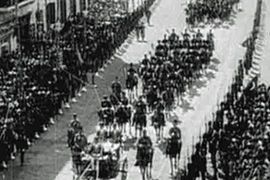 |
| Unity was intended to free the Arab East of Ottoman occupation |
The story of the struggle for Arab unity is entangled with the modern history of the Middle East and both are steeped in conflicting ideologies, revolution, oppression, betrayal and war.
Arab unity was intended as a way of ridding the Arab East of Ottoman occupation and – for Christian proponents at least – of creating a secular society in which Muslim and Christian Arabs would be equal.
This introductory episode tackles issues like identity, loyalty and self determination and asks the question, will Arabs ever address the gap between the reality and dream of unity?
Watch:
Why Unity? – Part 1
Why Unity? – Part 2
Episode 2: Unity Betrayed
The Ottoman empire had ruled the Arab World for 400 years, the final straw coming in the late 19th century when Turkish efforts to centralise control led to strong anti-Turkish feelings.
 |
| Sherif Hussein of Mecca |
The Arab cultural renaissance, known as the Nahda, developed in response and revived in people a sense of identity. But a looming World War was about to reveal the fragility of the intellectual renaissance on which the Arabs based their hopes of closing the gap between the dream and reality of unity.
With the 1916 Arab Revolt, it seemed that dream was going to be fulfilled. However, European colonialism stopped the dream and divided the region. But were the Arabs really united in the first place?
This episode examines the decline and dissolution of the Ottoman Empire, as well as growing European colonial interest in the region, expressed in the Sykes-Picot Agreement of 1916 and the 1917 Balfour Declaration which paved the way for the future state of Israel.
It also explores the 1916 Arab Revolt, led by Sherif Hussein of Mecca and his sons, aided and abetted by Britain and TE Lawrence.
Watch:
Unity Betrayed – Part 1
Unity Betrayed – Part 2
Episode 3: Trials and Tribulations
The end of World War I left the Arabs feeling betrayed. Their dream of a new Arab Kingdom had not materialised; Britain and France had instead divided the region between them. As the promises of the past receded and their sense of fragmentation increased, Arabs began to turn to new political ideologies – charting a path for the Arab Nation in the hope of addressing the gap between the reality and dream of unity.
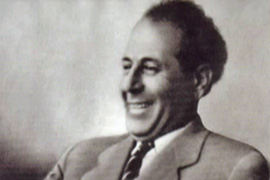 |
| Saadeh founded the Syrian Social Nationalist Party |
The defeat of the Ottoman Empire and the abolition of the Islamic Caliphate by the newly secular Turkish state forced the Arabs to reconsider their personal and political identities.
The 1920s and 30s saw the rise of a multitude of secular ideologies such as communism and socialism. And it was at this time that the importance of the idea of a secular Arab Nationalism began to emerge.
In Lebanon in 1932, Antoun Saadeh founded the Syrian Social Nationalist Party (SSNP), dedicated to recreating what Saadeh termed “natural” Syria: Syria, Lebanon, Palestine, Cyprus and parts of Iraq and Turkey. He rejected both language and religion as defining characteristics of a nation, thus setting himself apart from other Arab nationalists, believing that people should be united by history, geography and cultural heritage instead.
 |
| Michel Aflaq and Salah Bitar founded the Baath party |
In Syria in 1947, Michel Aflaq and Salah Bitar founded the Baath party, a pan-Arabist party rooted in both socialism and nationalism which would eventually only have genuine appeal in Syria and Iraq. Although ostensibly a secular party, Baathism differed from the SSNP in positing religion, specifically Islam, as the greatest achievement of the Arabs and as the source of the Arab World’s eventual regeneration.
With the fall of Saddam Hussein after the American invasion in 2003 and the current political and economic pressures on Syria, what remains of these visions of Arab unity? In this episode we ask; how much did either party contribute to the concept of Arab unity and how much did they detract from it?
Watch:
Trials and Tribulations – Part 1
Trials and Tribulations – Part 2
Episode 4: A Cause for Unity
The fall of the Ottoman Empire at the end of World War I left the Near East divided into spheres of colonial influence. In a secret agreement known as Sykes-Picot the Allies, namely France and Britain, carved the Arab World between them, even though Britain has actually promised independence to the Arabs who had helped them oust the Turks.
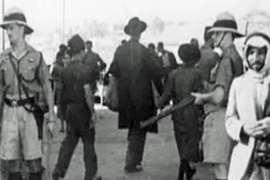 |
| Britain promised independence to the Arabs |
While Lebanon and Syria were controlled by the French, Palestine was taken by the British who had assured Sherif Hussein, leader of the 1916 Arab Revolt, that after the war Palestine would be part of an independent greater Arab Kingdom.
At the same time, however, they promised Lord Edmond Rothschild, a prominent member of the World Zionist Organization a homeland for the Jewish people. The resulting 1917 Balfour Declaration, which paved the way for the creation of the state of Israel, brought about the single biggest crisis the Arab World has faced in the modern era.
The struggle for Palestine in one of the main issues at the heart of the question of Arab unity.
Everywhere you go in the Arab World, it is the constant refrain, whether in discussions of democracy, identity or even religion.
 |
| The conflict has been as diverse politically as it has been unifying emotionally |
In theory then, it presents the perfect opportunity for Arab states to work together, if only to help out a brother nation in distress. It is not just the human tragedy of the Palestinians that has affected the Arab World but also the historical, cultural and religious significance of Palestine and specifically Jerusalem.
In this episode we look at how in practice, the conflict has been as divisive politically as it has been unifying emotionally. While in theory subscribing to solidarity and unity with the Palestinians, many Arab states have either made false promises or else withheld aid for personal political gain.
From Nasser to Assad and Hussein, the region’s strongest leaders have all sought in different ways and for different reasons, to shape the resolution of this conflict. Can solving the Palestinian problem ever address the gap between the reality and dream of Arab unity?
Watch:
A Cause for Unity – Part 1
A Cause for Unity – Part 2
Episode 5: The Unity Experiment
Between 1952 and 1967, the drive for Arab Unity was at its strongest. This period gave new meaning to Arab nationalism. It was an age of solidarity and the pursuit of unity through mass political movements. It was an era dominated by a leader the likes of whom the Arabs had not seen in a long time.
 |
| Under charismatic Jamal Abdel Nasser, Egypt became a republic |
On July 23, 1952, a group of officers in the Egyptian army calling themselves the Free Officers Movement took power in a bloodless coup. Under the leader of the coup, a charismatic officer called Jamal Abdel Nasser, Egypt became a republic.
In 1956, Nasser ordered Egyptian forces to take control of the Suez Canal, a vital artery for the transportation of goods and petrol to the Western World. The British and French technicians guarding the waterway were expelled and although Nasser lost the ensuing war which pitted Egypt against France, Britain and Israel. American and Soviet pressure forced a retreat of European troops from the Suez, leaving Israel in control of the Sinai Peninsula.
Nasser introduced a new way of thinking. Arabism – or Nasserism as it is often called – fed the principles of Arab unity making the peoples of Egypt and the Arab world feel they shared a common cause: freeing all colonised and occupied Arab lands.
 |
| Nasser proclaimed political unity between Egypt and Syria in 1958 |
The high point of Arab unity came in 1958 when Nasser proclaimed political unity between Egypt and Syria. The United Arab Republic lasted only until 1961, falling apart amid Syrian recriminations of Egyptian high-handedness. This is the only example of Arab Unity and seen as a dark time by the Syrians.
A populist, often autocratic albeit charming leader, Nasser’s centralised and increasingly policed state eventually became the model for many emerging Arab states and statesmen.
In this episode we ask the questions; did Nasserism distort the Arab World’s search for unity by encouraging the veneration of authoritarianism? Do Arab leaders, among them Nasser himself, offer more than the cult of personality? What happens to the state or to notions of unity when a leader’s feet are found to be made of clay?
Watch:
The Unity Experiment – Part 1
The Unity Experiment – Part 2
Episode 6: Disillusion
By the late 1950s, Gamal Abdel Nasser, Egypt’s president, was the Arab world’s most powerful and influential leader.
 |
| Gamal Abdel Nasser inspired the Arabs with a new kind of Arab Nationalism |
With his own brand of socialist ideology and political victories he impressed and inspired the Arabs, giving a new meaning to Arab Nationalism.
But Nasser’s very success, begged the question – does unity need a collective effort or could the Arab Nation be built by a single leader?
Nasser’s drive for unity with Syria would answer that question. Pan Arabists promised that the fusion would bring liberation, stability and prosperity.
But in the hands of actual practitioners it seemed to be converted to a tool of domination, wielded in this case by the Egyptians over the Syrians. Disillusion set in.
In the end, it was the fragile United Arab Republic that suffered. The merger of Nasser and the Baath turned into a struggle for control within the camp of Arab Nationalism.
The union did not release the pent-up potential that only the combining of Egypt and Syria could tap.
In the meantime Nasser had come under increasing pressure to confront Israel. Arab leaders began doubting his sincerity in defending Palestine, the cause he claimed to support.
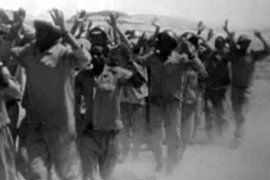 |
| The military defeat of 1967 served a big blow to Arab self confidence |
Counting heavily on Arab support, Nasser’s stated his intention to attack Israel, although militarily stretched to breaking point with a large part of Egypt’s army fighting in Yemen.
The Arab Defence Pact was put to the test in 1967, in what became known as the Six Day War.
In a pre-emptive strike on June 5, Israel destroyed most of Egypt’s air force on the ground.
Arabs refer to the Six Day War as the Naksa – the Defeat. The Arab Defence Pact failed, Jerusalem and the rest of Palestine was occupied and Syria lost the Golan Heights. Nasser was humiliated.
The military defeat of 1967 showed a lack of coordination among Arab states, Arab land was lost, the common enemy was victorious and it served a big blow to Arab self confidence.
In this episode we look at what is left of Nasserism and discuss the implications of the defeat of 1967 which worked its way deep into the collective Arab psyche.
Two voices were raised in opposition to Arab nationalism. One spoke the language of allegiance to individual states. The other spoke of loyalty to a universalist Islam.
Watch:
Disillusion – Part 1
Disillusion – Part 2
Episode 7: The Jewish factor
The struggle to keep Palestine, an inseparable part of the greater Arab nation, became one of the main issues at the heart of the Question of Arab Unity. And with the creation of Israel in 1948, the two states envisaged in the United Nations partition-plan did not come into being.
 |
| The Palestinian authority was ultimately proven to be ineffectual |
Over half of the Palestinian population fled or were expelled. The Palestinians found themselves still living in camps almost two decades after the war of 1948. New solutions were needed. The Palestinians began to think about solving their problem by themselves. So could Arab Unity be forged through war against a common enemy?
In this episode we follow the history of unity in this period, through the Arab-Israeli conflict up to first the Madrid conference and then Oslo accords.
The Madrid conference in 1991 symbolised another turning point in the slow fragmentation of Arab Unity.
Israelis, Syrians, Lebanese, Jordanians and the Palestinian delegation met to negotiate a joint settlement. Though the Madrid conference was considered a failure, the reality of Israeli- Palestinian negotiations – once completely unthinkable – highlighted a fundamental shift in Arab thinking towards Israel.
 |
| Israeli troops largely remain in place |
The Palestinian cause was being transformed from an ideological contest into an inter-state conflict. And by 1993, Israel and the PLO unilaterally signed the Declaration of principles in Oslo, formally recognizing each other’s existence. In the long-term, Oslo too was considered a failure.
The Palestinians never became truly independent. Israeli troops largely remained in place and the Palestinian authority was ultimately proved to be ineffectual.
The result has been the creation of a Palestine that is superficially at the heart of Arab unity and the reason that more Arabs give than any other for their opposition towards the West, and simultaneously of the creation of a Palestinian identity that was one of the first to break away from the wider Arab world.
Watch:
The Jewish Factor- Part 1
The Jewish Factor– Part 2
 |
| Islamist movements are gaining political ground and mass public support |
Episode 8: Holy Unity
The collapse of Nasserism as a uniting force and the inability to regain the territories lost in wars with Israel led to the questioning of the secular ideologies that have dominated regional politics since World War II.
With many governments finding it increasingly difficult to fulfil their promises of prosperity and national strength in the face of globalisation and increased foreign intervention, Islamist movements, long suppressed are gaining political ground and mass public support.
In this episode, we ask could Islam be the factor which unites the gap between the dream and reality of Arab unity?
In Egypt’s 2006 polls, the Muslim Brotherhood made a strong showing, while the authorities watched with great concern. It is this movement that is at the origins of Islamist movements in the Arab world.
We talk to members of the Muslim Brotherhood in Cairo asking the modern generation of Islamists about their understanding of Arab unity and how it applies to Islamic unity? And what this mean for non-Muslim Arabs?
The foundations for the spread in Islamism have long been laid: opposition to Colonialism and the West and wide discrepancies in living standards in most Arab societies as well as political repression, have all resulted in frustration.
But most importantly, it is the lack of faith in Arab Nationalism since the defeat of 1967, and in the ruling regimes of the Arab World that have played a major role in the increasing popularity of Islamist movements.
 |
| We talk to members of the Muslim Brotherhood in Cairo |
During the Soviet occupation of Afghanistan, many young men from all over the Arab world joined the battle against Soviet forces, calling themselves “Afghan Arabs”.
In fact it was not the term “Afghan” that united all these men, it was the Jihad against what they termed “Infidels”, in other words, non-Muslims.
Many returned to their home countries with the aim of setting up an Islamic state. Islam, for these men, was seen as the main unifying factor for the Arab World. We ask the question “why do they think Islam, not Arabism is the answer?”
In the final analysis, we ask can Islam encompass the necessary social and political forces that make Arab Unity less of a dream and more of a reality?
Watch:
Holy Unity- Part 1
Holy Unity– Part 2
Episode 9: Disunity?
Fifty five years ago, the voice of the Arabs or Sawt al-Arab radio was launched in Cairo, broadcasting the revolutionary ideology of Egypt’s new leaders – the Free Officers who had overthrown the monarchy.
Taking advantage of cheap transistor technology the Egyptian regime was able to get its message across the Arab World.
 |
| The Arab world is being brought together by transnational media |
And by using a combination of emotional Arabist rhetoric and popular singers such as Um Kalthoum, the voice of the Arabs emerged at a critical moment in the history of Arab unity.
In this episode we explore the relationship between Arab regimes, Arab media and the question of Arab unity in a time when the idea of Arab countries unifying – culturally if not politically – seems to be undergoing a revival.
The Arab world is being brought together in a shared cultural and political experience by transnational media based on fast-evolving satellite technology.
Pan-Arab media are creating platforms for dialogue and for shared experiences – and in the process are bringing Arabs together.
Slogans like the ‘Arab Street’ are being bandied about and the ordinary citizen is voicing discontent with state of the world around him. Building on a common language and traditions, the people of the region are sharing their experiences in ways that were unimaginable even a decade ago.
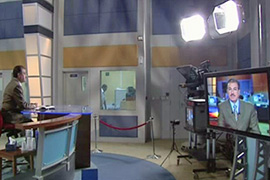 |
| Pan-Arab media are creating platforms for dialogue and for shared experiences |
The proliferation of independent media means hard-hitting realities are often televised and reported immediately.
And Arab audiences have access to an instant and close-up view of the daily struggles, squabbles and suffering of their fellow Arabs.
But this has led to accusations that the new media has been a force of disunity in the region.
How will the regimes of the region cope with new platforms of expression available to their citizens? And will these changing structures of communication re-awaken the sense of common destiny Arabs feel?
This fast-developing Information Age is likely to present new opportunities for Arab audiences, and new challenges to Arab regimes.
So will a pan-Arab media – addressing itself to a global Arab audience – prove to be an agent of harmony or discord?
Watch:
Disunity?- Part 1
Disunity?– Part 2